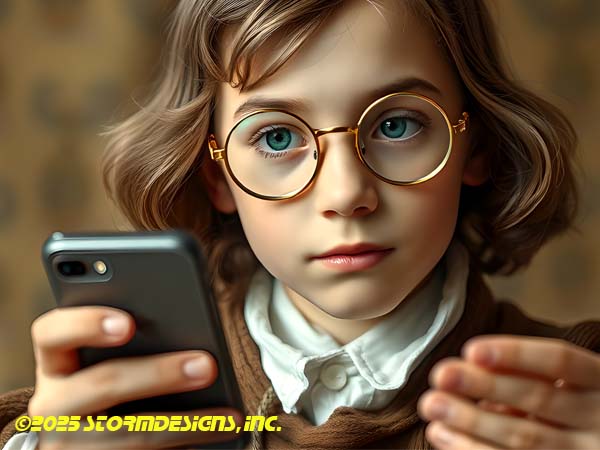How did Ben become “Ben”?
Benjamin Franklins Story
“Philly’s Inventor of the American Dream!”
On June 10, 1752, Benjamin Franklin took a kite out during a Philadelphia storm to see if a key attached to the string would draw an electrical charge.
It's hard to imagine anyone comparing to Benjamin Franklin in terms of personifying the American Dream. In a sense, he represents the ideal nearly every entrepreneur aspires toward and did so with class, style and an appreciation for common sense and ordinary people.
Ben inspires us to be creative, problem solving and successful and diplomatic. If you'd like to be inspired like Ben, read on to learn of his influences, his inventions and what made Benjamin ”Tick“.
Been Jammin'
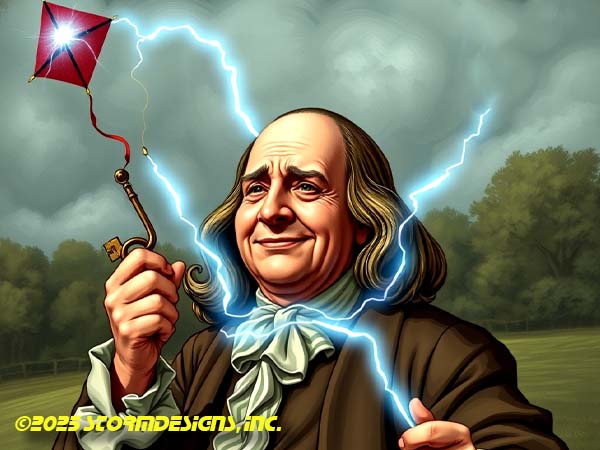
Of course, here at StormDesigns we appreciate the connection he has to our region in Philadelphia, Innovation and that famous thunderstorm where he discovered the key to electrical conductivity.
But the real question is where did it start? How do we ordinary folks tap into our inner “Benjamin” and start earning Big Benjamin$ for our life, our families and our vision!? Let's look at his history to inspire in that direction.
BrainStorm
Design
Develop
Implement
General History
General History
Benjamin (no middle name!?) Franklin was born on January 17, 1706, in Boston, Massachusetts, to a large and modest Puritan family.
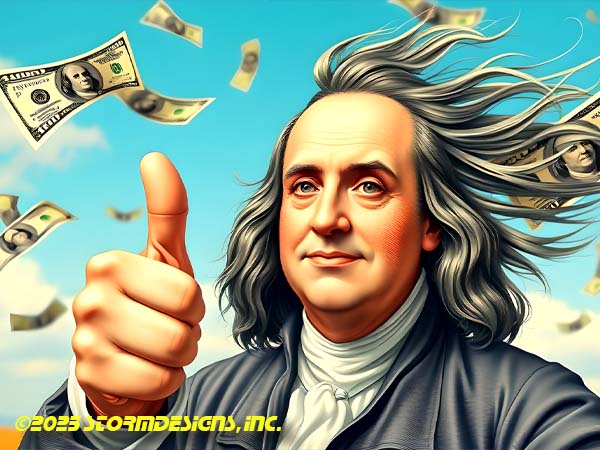
Benjamin (no middle name!?) Franklin was born on January 17, 1706, in Boston, Massachusetts, to a large and modest Puritan family.
The 15th of 17 children (!!), he was born to Josiah Franklin, a candle and soap maker, and his second wife, Abiah Folger. Franklin's upbringing was shaped by a hardworking, frugal, and religious household, emphasizing discipline and self-improvement.
Childhood and Home Life:
-
Large Family: With so many siblings, Franklin grew up in a bustling household where resources were stretched thin but influences and learning experiences were plentiful.
-
Limited Formal Education: He attended the Boston Latin School for only a couple of years before his father pulled him out at age 10 to work in the families candle-making business.
-
Apprenticeship: At 12, he was apprenticed to his older brother James, a printer. This exposed him to books, newspapers, and the world of publishing. All were very critical to his later success! His young apprenticeships served him well. If you're trying to influence any young people in your life, find things that interest them and perhaps match them to trustworthy grown-ups who'd love a young helper!
Earliest Influences:
-
His Father, Josiah Franklin: Taught him the value of hard work, thrift, and self-discipline.
-
His Brother James Franklin: As a printer and publisher of The New-England Courant, James introduced Franklin to writing and the printing trade. Their relationship was strained, but this experience was formative.
-
Books and Self-Education: Franklin was an avid reader, consuming works on science, philosophy, and literature. He admired writers like Plutarch and Cotton Mather.
-
Silence Dogood Letters: At age 16, he wrote satirical essays under the pseudonym "Silence Dogood," mocking colonial society. This early writing career helped develop his wit and persuasive skills.
-
Boston's Intellectual Climate: Growing up in Puritan New England, Franklin was surrounded by religious and intellectual debates, influencing his later views on reason and tolerance.
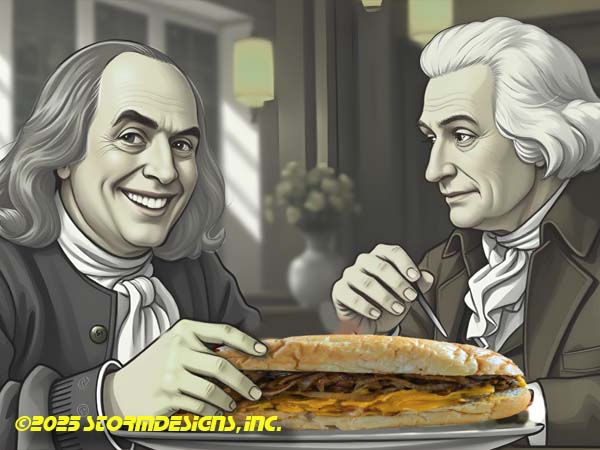
Though Franklin’s childhood was one of modest means and strict discipline, it laid the foundation for his later success as an inventor, writer, and statesman.
His self-taught education and exposure to printing shaped him into one of the most influential figures in American history.
Most Noted Inventions
The “Franklin Stove“, the Lightning Rod, Bifocal Glasses...
Benjamin Franklin‘s first noted invention was the Franklin Stove, also known as the Pennsylvania Fireplace, which he designed in 1742. This cast-iron stove was created to improve heating efficiency in colonial homes while using less firewood than traditional fireplaces.
Why It Was Important:
-
It produced more heat while reducing smoke in homes.
-
It used less wood, making it more efficient and economical.
-
The design included a baffle system that improved airflow and heat retention.
Despite its success, Franklin never patented the stove because he believed in the free exchange of ideas for the betterment of society. This philosophy extended to many of his later inventions, like the lightning rod and bifocal glasses.
More detailed list of his Inventions:
Benjamin Franklin was known for his practical inventions that improved everyday life. While there isn't an exact number, he is credited with inventing or significantly improving at least a dozen notable devices. Here’s a list of his most famous inventions:
-
Lightning Rod (1752) – Protected buildings from lightning strikes by directing electricity safely into the ground. (Zap insurance!)
-
Bifocal Glasses (Around 1784) – Allowed people with both nearsightedness and farsightedness to see clearly with a single pair of glasses. No more switching specs every five seconds. - learn more
-
Franklin Stove (1742) – A more efficient heating stove that provided better heat output while using less wood. Cozy and clever!
-
Glass Armonica (1761) – A musical instrument that produced ethereal sounds by spinning glass bowls of different sizes. Mozart and Beethoven even composed for it!
-
Flexible Urinary Catheter (1752) – A smoother, more comfortable catheter designed to help those with bladder issues. Invented for his brother who suffered from bladder stones—shows Franklin’s compassion as well as ingenuity.
-
Swim Fins (1717) – Hand paddles for swimming to increase speed, designed when Franklin was a young boy. Early aqua-athlete style.
-
Odometer for Carriages (1750s) – Measured the distance traveled by carriages, which he used to improve postal routes. Yes, postal service UX upgrades—Ben was on it!
-
Long Arm (1780s) – A device with a grabber at the end to reach books on high shelves. Basically, an 18th-century librarian's dream tool.
-
Three-Wheel Clock (1757) – A simplified clock with fewer moving parts, making it more reliable.
-
Reforms in Street Lighting (1757) – He improved streetlamp design by adding better ventilation to reduce soot buildup. Not quite an "invention," but he devised better ways to design and place lamps for clearer, cleaner streets in Philadelphia!
Influence Beyond Physical Inventions:
Though not physical inventions, Franklin also contributed to:
-
Daylight Saving Time (as an idea to conserve candles)
-
The American Fire Department (co-founded the first volunteer fire company)
-
Public Lending Libraries (helped establish the first in America)
-
The First Public Hospital (co-founded Pennsylvania Hospital)
Been Jammin'?
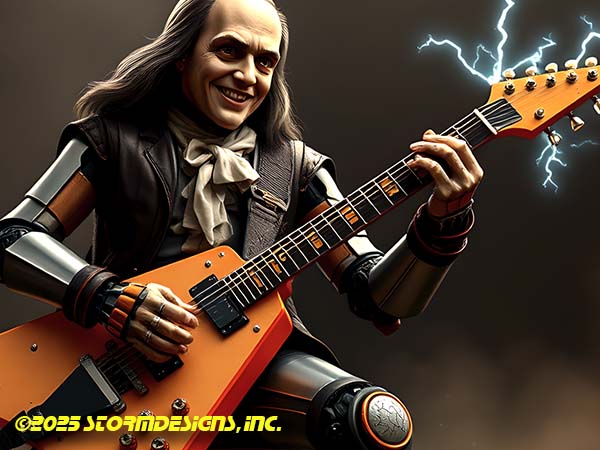
Franklin never patented his inventions, believing that knowledge should be freely shared for the benefit of society.
While we're not anti-patent or copyright for inventions we appreciate the generosity and purposefulness of his "Brand". Today's designs and inventions take a lot of work and expense most sadly can't give away or they would never happen.
This was truly a kind and good man deserving of his esteemed standing in our history. Let's get inspired to be as productive and positive as Benjamin! (BeenJammin!)
The Goals of our BrainStorm
- Determine how we can best benefit your needs.
- Learn about your business
- Share technology ideas and success models
- Develop one or more personae for visual language targeting
- Create an energizing Action Plan!
- Prepare to execute on that plan.
